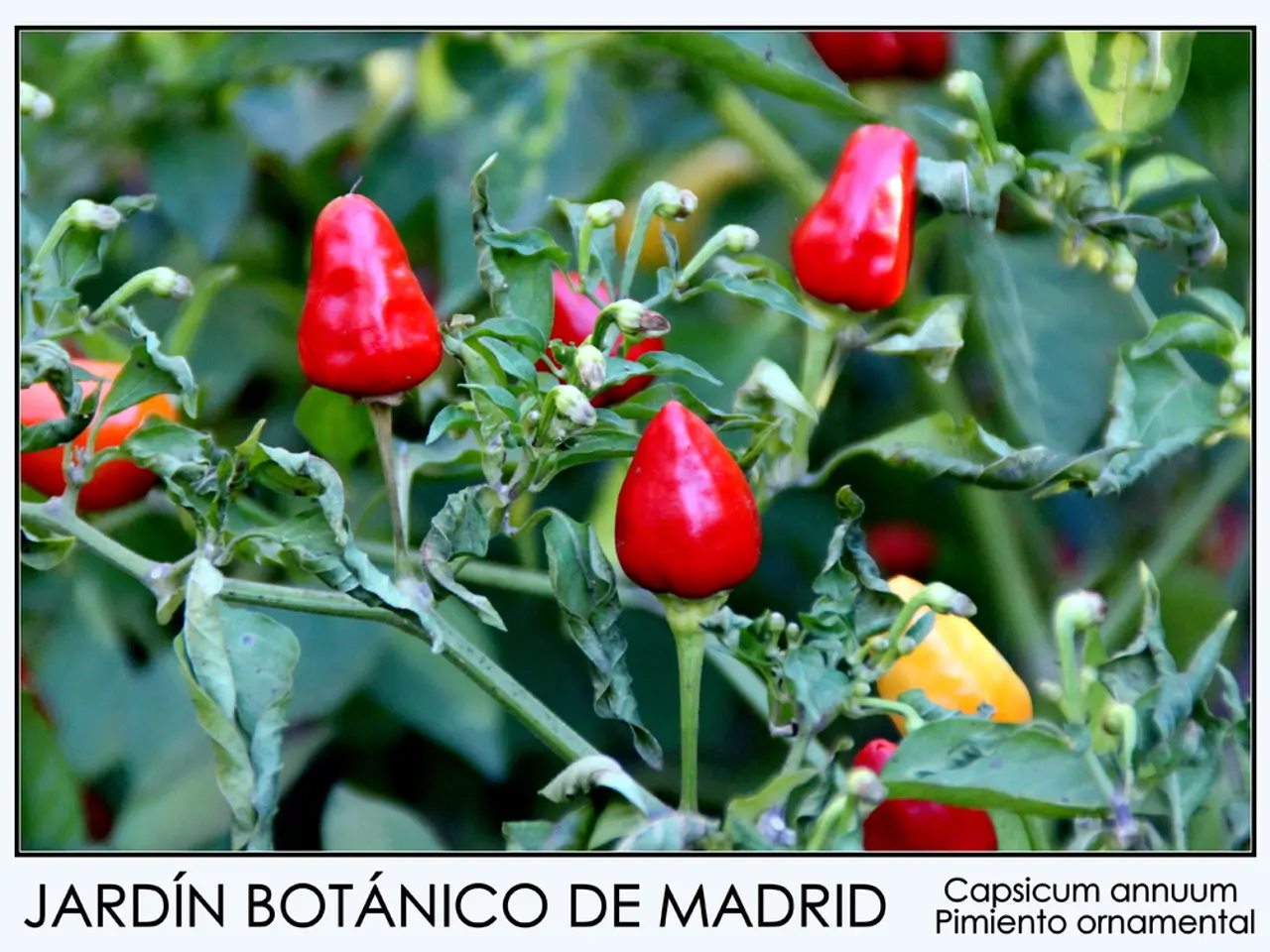Red Earth Gardening: Discovering Suitable Vegetation Options
In the heart of the garden lies red soil, a rich and vibrant terrain that can nurture a diverse array of plants. From the radiant blooms of daylilies to the lush foliage of fig trees, red soil can be a gardener's dream come true.
Daylilies, with their wide range of colours including red, orange, purple, and pink, thrive in fertile and loamy soil that retains moisture well. Hibiscus, a member of the mallow family, grows best in a rich, well-drained soil mixture.
For cultivating vegetables like tomatoes, peppers, okra, and squash in red soil, thorough soil preparation and appropriate fertilization tailored to the soil's characteristics are key. Prepare the soil to a depth of 300 to 600 mm by breaking up clumps, removing stones and organic debris, and creating ridges or raised beds to improve drainage and aeration, which is crucial for root development and oxygen availability.
Red soils often have good drainage but may be prone to nutrient depletion. Applying appropriate fertilizers, such as phosphorus before planting, potassium during planting, and ensuring adequate calcium and micronutrients like zinc, manganese, iron, and boron, is important, especially for peppers, which are sensitive to deficiencies. Crop rotation and mulching can help maintain soil fertility and moisture retention, supporting healthy growth. Regular monitoring for soil compaction, salinity, and nutrient balance through soil testing enhances management.
Tomatoes, peppers, and squash benefit from a soil pH close to neutral (around 6.0–7.0), but red soil can sometimes be acidic, so liming might be necessary based on test results. Okra prefers well-drained, fertile soil with good moisture retention; preparing the seedbed similarly and ensuring consistent watering will support growth. Organic matter incorporation, such as compost, improves red soil structure, nutrient availability, and moisture retention.
Pomegranate trees can be grown in red soil and are easy to maintain if you have the right warm climate. Figs do very well in red soil and prefer a warm, sunny, and sheltered spot. Potatoes thrive in well-drained, nutrient-rich soil with a slightly acidic to neutral pH level.
Ginger can be successfully grown in red soil, and red ginger produces spectacular flower spikes. Consistent watering is crucial for red ginger to ensure the soil remains moist but not waterlogged. Grapes can be grown in red soil, but it is important to prepare the soil before planting.
Asters prefer cool, moist summers and cool nights, with full to partial sun exposure. Wet clay soil can lead to root rot in asters, so it is important to mix compost into the soil before planting. Asters should be planted in soil that is moist but well-draining and loamy.
Figs are best trained as fans against a sunny wall. Hibiscus flowers are beautiful but short-lived, usually blooming for only one day. Hibiscus need very bright light to bloom well indoors and are heavy feeders, requiring a balanced fertilizer. Hibiscus trees can be grown in red soil but may require additional attention to ensure they receive the right nutrients and light.
In summary, the key steps for growing a variety of plants in red soil are deep and careful soil preparation, appropriate fertilization, regular organic matter addition, crop rotation, and soil testing for pH and nutrient management. With the right care and attention, red soil can be a gardener's paradise, bursting with vibrant colours and lush growth.
- Indoor plants, such as hibiscus, require well-drained soil mixtures for optimal growth, even when cultivated within the confines of environmental-science studies or lifestyle trends in fashion-and-beauty.
- The field of science, including environmental-science, has presented numerous findings about climate-change effects on soil composition and its ability to sustain plants like tomatoes, peppers, and squash.
- As lifestyle preferences evolve towards eco-friendly choices and sustainable practices, home-and-garden enthusiasts are rediscovering the benefits of growing their own fresh produce in their red soil plots.
- The advancements in technology have led to the creation of innovative gadgets like smart irrigation systems that help manage water usage in the home-and-garden sector, ensuring optimal growth for plants in varied soil conditions like red soil.
- Data-and-cloud-computing technology has made it possible to monitor soil health, temperature, humidity, and moisture levels using connected sensors, providing essential insights for responsible-gambling and enhanced management of plants grown in red soil.
- In the realm of personal-growth and education-and-self-development, learning about the unique properties of red soil can open doors to big-wins in career-development opportunities, especially in agriculture, horticulture, and related fields.
- Casinos and gambling trends sometimes find their way into creative marketing for casino-games, lotteries, and Las Vegas entertainment, with promotions centered around big wins, personal growth, and achieving dreams - much like a green thumb gardener cultivating lush growth from red soil.
- As people invest in their personal and professional lives, they strive for career-development and understand the importance of lifelong learning, much like how plants in red soil require constant care and sustenance to yield big-wins in the form of abundant blooms or bountiful harvests.
- Understanding the needs and characteristics of red soil extends to an ever-growing realm - artificial intelligence, which can help predict trends, optimize resource utilization, and make agriculture more efficient.
- Traveling to various regions of the world offers opportunities to explore diverse soil types, including red soil, and learn from local practices, gaining insights that can be applied to gaming strategies, career journeys, or personal life choices.
- Sports fans in a game of chance, like casino-games, can draw inspiration from athletes' resilience and determination, much like a gardener diligently working to ensure their red soil garden thrives amidst the challenges presented by climate-change.
- From the rich red soil in the heart of the garden to the virtual world of data-and-cloud-computing, science continues to illuminate the subtle connections that bind our environment and our daily lives together, inspiring transformation on both personal and global scales.
- Taking responsible steps to tend to our personal and professional growth, and our red soil gardens, can yield bountiful rewards, just as a gardener nurtures their plot to witness big-wins in the form of vibrant flowers, lush foliage, and delectable produce.




